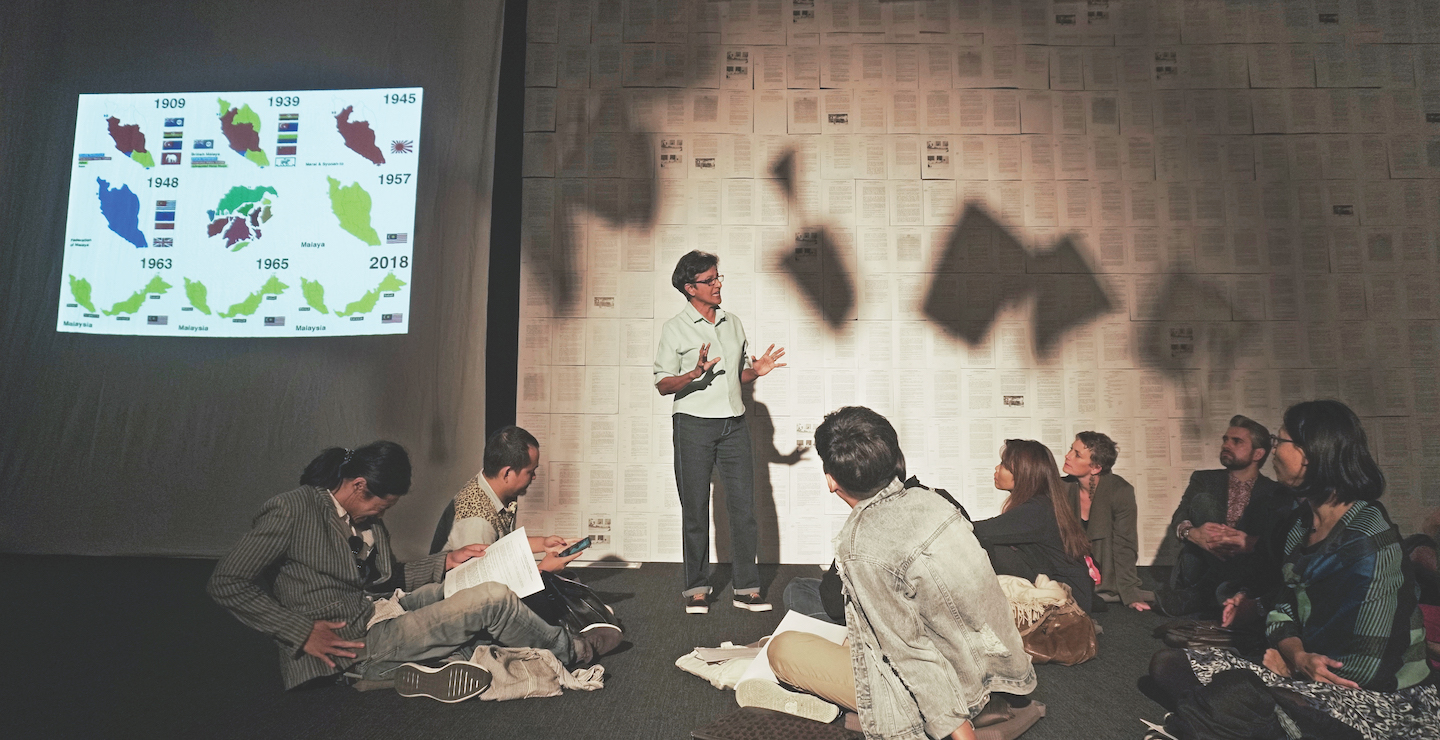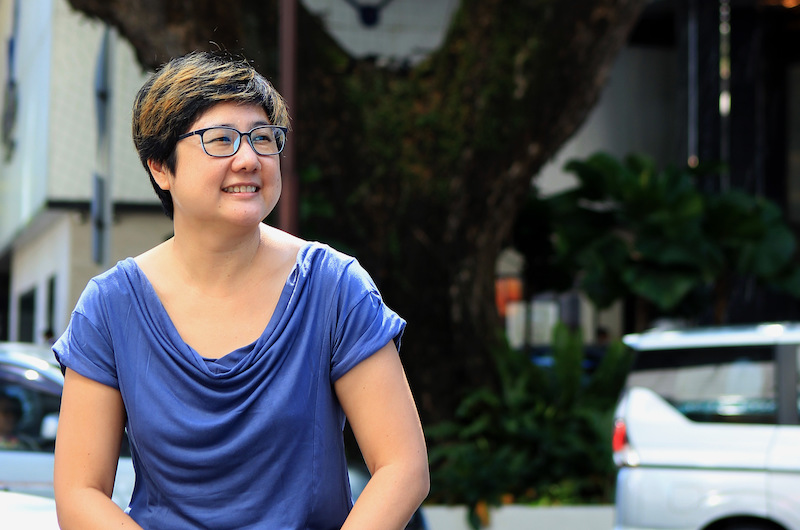
Five Arts Centre is a recent beneficiary of Cendana’s Arts Organisation Funding Programme (Photo: Five Arts Centre)
There has been a lot of conversation among those in the arts community this past month. People normally more accustomed to performing than talking are coming together to host, moderate, comment and discuss crucial issues.
Doing what they can to find recourse, it is a case of enforced camaraderie amid uncharted territory, to identify what needs fixing even if there is no solution or a provider for it at this point. What is clear is that Malaysian arts can no longer carry on being supported by a grassroots community, not with long-term survival at stake.
That is not to say they are not trying. When The Kuala Lumpur Performing Arts Centre (klpac) launched its #SaveYourSeat fundraising project last month, local theatre groups and individual art practitioners forked out their limited savings and salaries to support it.
Corporate sponsorships have ground to a halt in these difficult times, as funding giants such as Yayasan Sime Darby divert their money to help people at large, though it maintains the annual building maintenance and technical support funding of klpac. The INXO Arts & Culture (L) Foundation also suspended its RM100,000 grant for 2020 owing to the coronavirus outbreak. For the Chinese arts community, there is some help in the form of the ADA Drama Awards, which created a special Covid-19 fund for performers and companies.
This leaves the Cultural Economy Development Agency (Cendana) as the only major funder for the visual arts, performing arts and independent music industries at the moment. Last month, the unit of government-linked company MyCreative Ventures Sdn Bhd reworked its funding programmes in response to livelihoods being affected by the pandemic.
20180215_peo_izan_satrina_9993_izw.jpg

Cendana has also introduced the Create Now fund, which offers grants of up to RM1,500 for individual artists or cultural workers, and RM3,500 per collective or arts organisation, to create digital works. The total amount parked behind this is RM1 million.
Two other new funding programmes — the Visual Arts Inspire and Visual Arts Showcase, as well as the Independent Music funding programme — have had their initial launch date in the second half of the year brought forward and applications are now open.
“We’ve introduced Create Now as an immediate, rapid response. The call for applications is conducted every two weeks and the processes of response and disbursement have been cut by half, meaning the team is working overtime to ensure we get money out as [quickly] as possible. It’s a way for us to help artists continue doing their work, and to take care of their well-being,” says Cendana CEO Izan Satrina Mohd Sallehuddin.
Cendana has also been providing food aid for arts workers. It has been receiving about 150 requests per week so far. Working on the basis that the effects of the coronavirus pandemic will last for about 18 months at least, this is the first of three phases that it has devised, after a survey of how the arts have been impacted was done in March.
“This is the recovery phase, where quick funding is needed. After this, in the first half of 2021, we hope to roll out another set of funds under Recharge, to accelerate people into art spaces, whether it be through marketing support or subsidy of tickets. The last phase will be Grow, by early 2022, where we look at the longer-term strengthening of the arts industries,” says Izan.
Cendana’s new programmes, which offer up to RM15,000 for visual artists to travel for research — though that is now limited to within Malaysia — and RM30,000 for artists or independent art space owners, curators and art collectives to create an exhibition or publication, are much appreciated.
Kenny Teng, the owner of G13 Gallery, says while they do not immediately benefit commercial galleries like his, the programmes are good news for the industry in general, especially since they also cover digital exhibitions. He adds that funding should be practical and that funders should consider allowing post-exhibition or publication claims, provided that all the necessary procedures are followed. “The ‘do first, claim later’ approach can be more effective. It can be tough for artists to pitch, for one, but also, this prevents abuse of the funds,” says Teng.
The same sentiment is not shared by the performing arts community, who find little comfort in short-term remedies. “I think Cendana’s funding is just a balm,” says June Tan, a scriptwriter, producer at theatre company Five Arts Centre and member of arts coalition ReformARTsi. “It helps artists to create smaller projects, but to support the arts long term, we need to look at the structural deficiencies.”
Five Arts Centre is a recent beneficiary of Cendana’s Arts Organisation Funding Programme.
20200109_peo_june_tan_9173_izw.jpg

To sustain the livelihood of artists in the long run, Tan says there needs to be a more fundamental change. “Consistent funding, like an annual grant funding cycle, for example, is the best way to help the industry now. It means when artists come out of this, they can apply for the grant to make new works and figure out how to create again,” she observes.
However, Tan is all too aware that Cendana’s RM5 million funding (excluding the visual arts, which was given a separate budget last year) for the whole country is “dismal” and limits the work that it can do.
Izan acknowledges the limitation. “I’m trying my best with my team of 11. We’ve rolled this out on our own, cutting down on our budgets and using our savings to make this recovery phase happen. It is a measure for immediate relief. For the long run, we can’t do it all alone.”
The conversation on what can be done, it would seem, has reached an impasse. What is even more discouraging is the rather tone-deaf dismissal of the industry’s struggles by Minister of Tourism, Arts and Culture Datuk Seri Nancy Shukri. During a recent interview, she suggested that things were not too difficult for artists.
Tan says now is a good time to evaluate and fix what is fundamentally a fragmented and fragile industry. “We’ve always talked about sustainability. But now it’s going to be worse. There’s also a whole industry of freelancers who are not supported by any association or guild. So now, when the virus hits, it reveals the vulnerabilities of that group of people. They can’t even apply for bantuan EPF (Employees Provident Fund), because they don’t have savings there. We also don’t have a registry of artists in this country, so it doesn’t help their voices be heard or the numbers seen.”
But this is a topic that the industry perhaps does not have the luxury of addressing yet.
Izan agrees with Tan that the strengthening of platforms such as klpac or the Damansara Performing Arts Centre needs to be addressed in order to ensure that there are avenues and jobs for artists going forward.
“To get more resources for these platforms, we need to build a case to bring to, say, the Ministry of Finance or the administration in-charge. We’re working on that in the next couple of months. But there is also a really urgent need for private corporations or public agencies to assist us in this part of the industry. I know there are other important issues right now to resolve, but this is also a sector in dire state, and it is an important sector to look at,” Izan emphasises.
Speaking candidly, she says a core challenge is the assessment of return-of-investment for the arts. In 2016, Cendana’s baseline reports showed investments in the arts made an almost zero per cent contribution to the Klang Valley’s revenue. A figure like that hinders any real motivation for change at the policy level, especially in terms of arts education, despite it being long overdue.
“But maybe we have been looking at it wrongly. One thing I’ve learnt from my peers in international art councils, they started similarly like us, talking about GDP, jobs and so on. But eventually, they started talking about value — value to the country and what the arts bring,” says Izan. She adds that the challenge is convincing those in power of this truth.
This article first appeared on May 11, 2020 in The Edge Malaysia.


